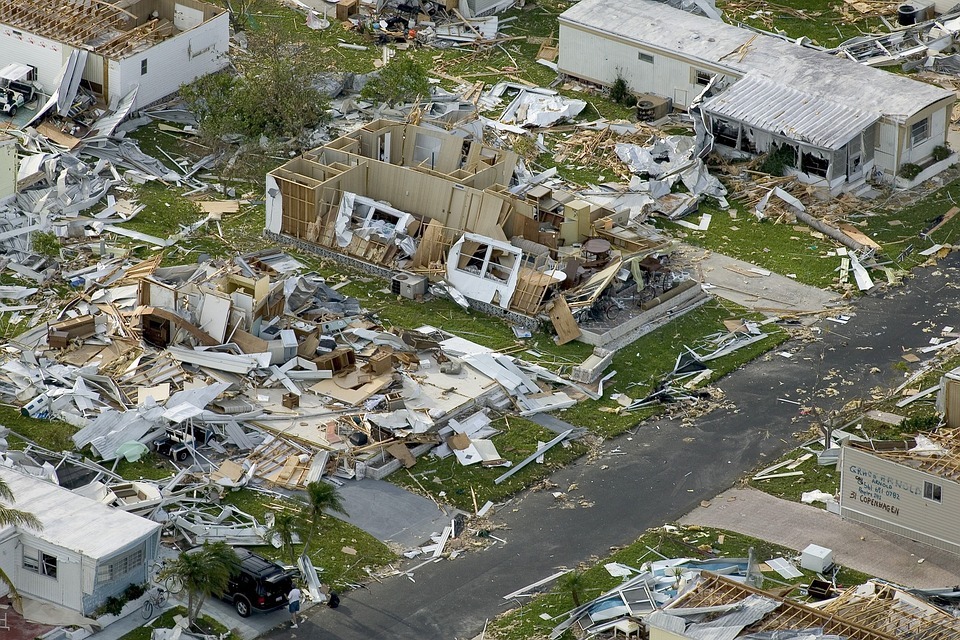The Dust Bowl: Environmental Disaster and Economic Impact on American Agriculture
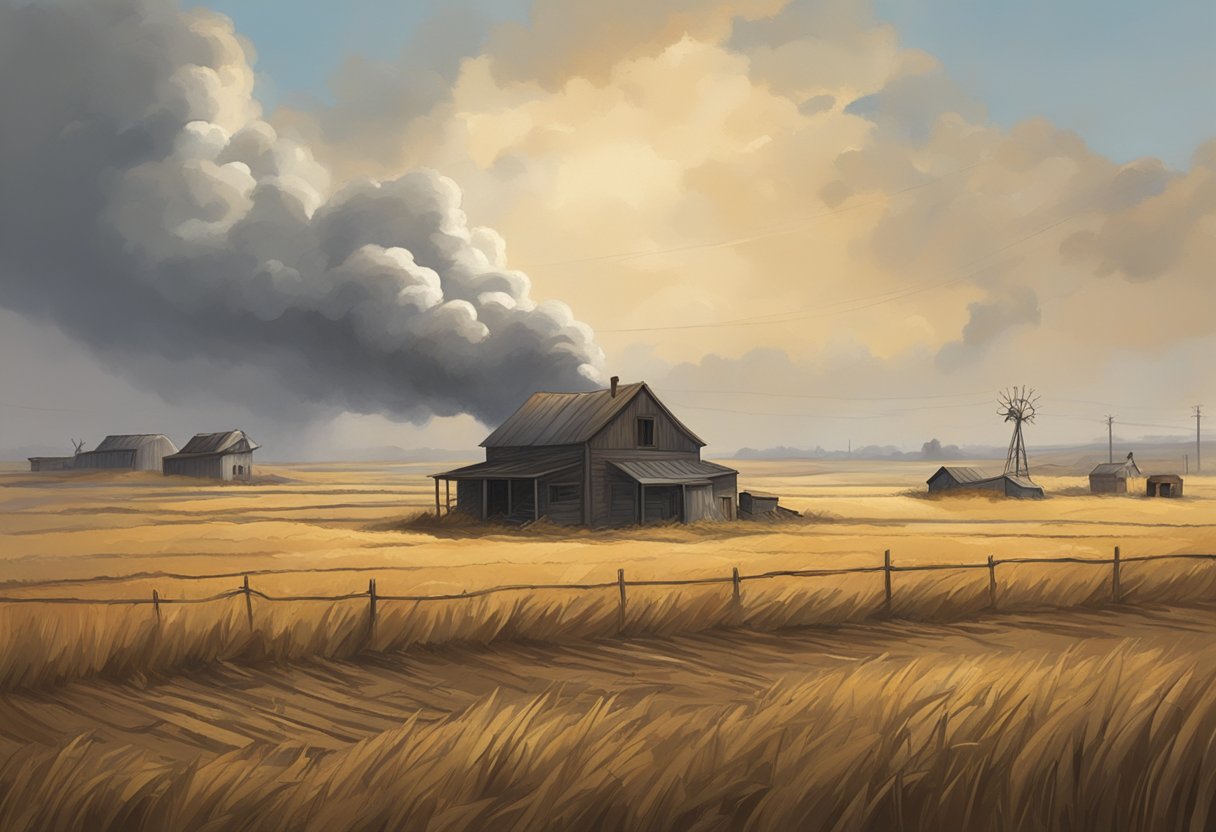
The Dust Bowl of the 1930s stands as one of the most significant environmental disasters in United States history. It transformed the landscape of the Great Plains, leading to vast ecological and economic changes. Massive dust storms, triggered by severe drought and poor farming practices, devastated the land and displaced countless families.
Economic impacts were equally profound. Farmers faced crop failures and severe financial hardships, leading many to abandon their lands in search of better opportunities. The government, led by FDR, responded with policies aimed at relief and recovery, including soil conservation programs and emergency aid.
The severity of the Dust Bowl left an enduring legacy on America's agricultural practices and environmental policies. To fully grasp its impact, one must consider its intertwining with the Great Depression, as both events reshaped the nation's economy and ecology in profound ways.
Historical Context
The Dust Bowl did not happen in isolation. Various economic and agricultural developments post World War I and government land policies such as the Homestead Acts set the stage for this disaster.
The Economic and Agricultural Boom Post World War I
After World War I, the demand for American wheat surged worldwide. Farmers, driven by high wheat prices, bought more land and equipment. They used mechanized farming to increase production rapidly. The result was the large-scale conversion of grasslands into farmlands.
This boom had short-term benefits but long-term consequences. The removal of native grasses made the soil vulnerable. When drought hit in the 1930s, there was nothing to hold the soil in place. The wind easily picked it up, creating massive dust storms.
Influence of the Homestead Acts
The Homestead Act of 1862 and subsequent acts like the Kinkaid Act and the Enlarged Homestead Act offered settlers land at low costs. These acts encouraged the settlement of the Great Plains, previously considered unsuitable for farming due to low rainfall.
Thousands of settlers moved in, plowing up millions of acres of native grassland. The lack of knowledge about sustainable farming methods led to poor land management. Farmers overworked the land, depleting nutrients and making it prone to erosion. Hence, when drought struck, the cultivated land turned to dust, creating the Dust Bowl conditions.
Causes of the Dust Bowl
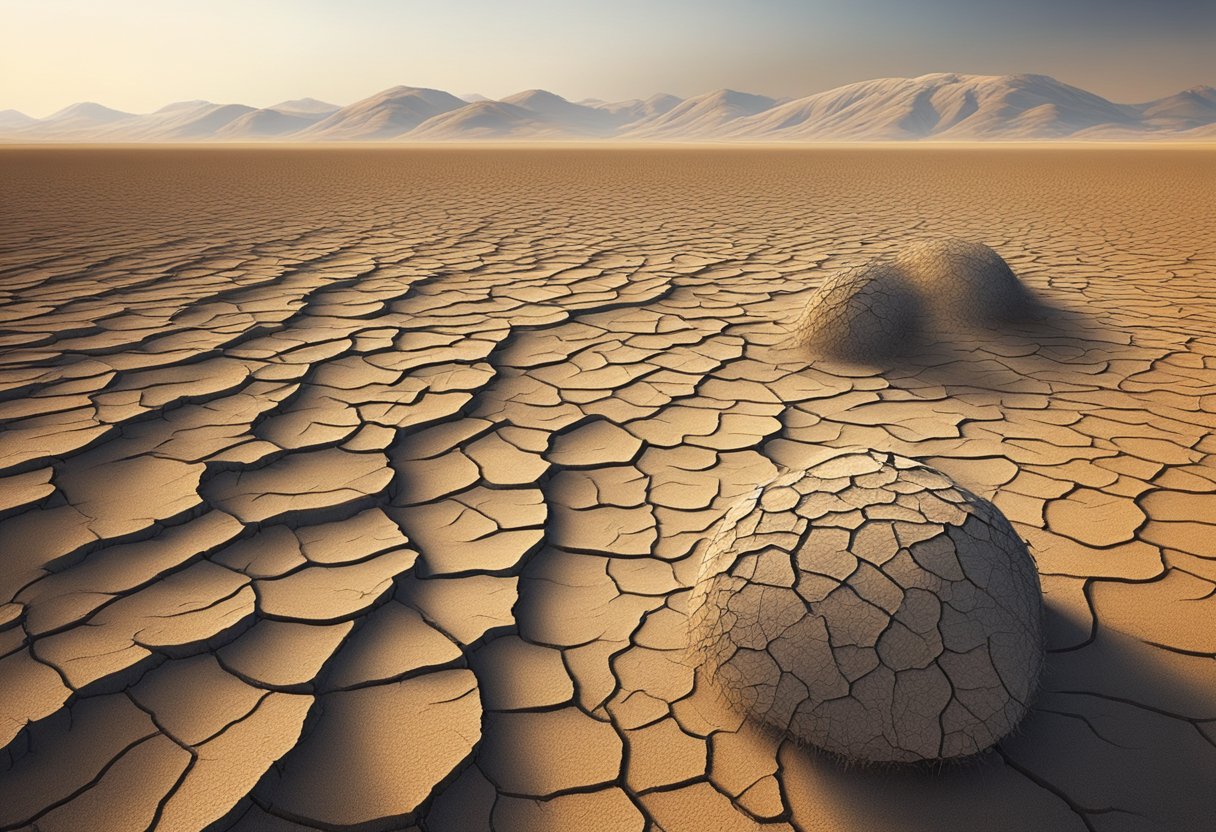
The Dust Bowl was a severe environmental disaster marked by massive dust storms. Several major causes contributed to this phenomenon, including agricultural practices and changes in climate.
Agricultural Practices and Land Management
Farmers plowed the native grasslands to plant crops. The deep roots of the grasses had helped to hold the topsoil in place. When the grass was removed, the soil became loose and easily eroded.
Monoculture farming also played a role. Farmers planted the same crops repeatedly, which depleted the soil of nutrients. The soil became less fertile and more susceptible to erosion. Without crop rotation or soil conservation techniques, the land degraded quickly.
Topsoil was blown away by strong winds. This created the massive dust storms that characterized the Dust Bowl era. Both the government and individual farmers lacked adequate strategies for sustainable land management.
Drought and Climate Conditions
The Dust Bowl occurred during a period of severe drought. Rainfall was scarce, leading to dry and barren land. These conditions were ideal for dust storms as dry soil is easily picked up by the wind.
Semi-arid regions were hit hardest. These areas, like the Great Plains, already had infrequent rainfall. Wet years had previously masked the problem, allowing farming to expand into unsuitable areas. When the drought hit, the lack of moisture worsened the soil’s condition.
High temperatures also contributed to the problem. Hot weather dried out the soil further. Together with strong winds, these conditions created a perfect storm for causing dust storms. This environmental catastrophe was exacerbated by poor farming practices and natural climate variations.
The Dust Bowl Phenomenon
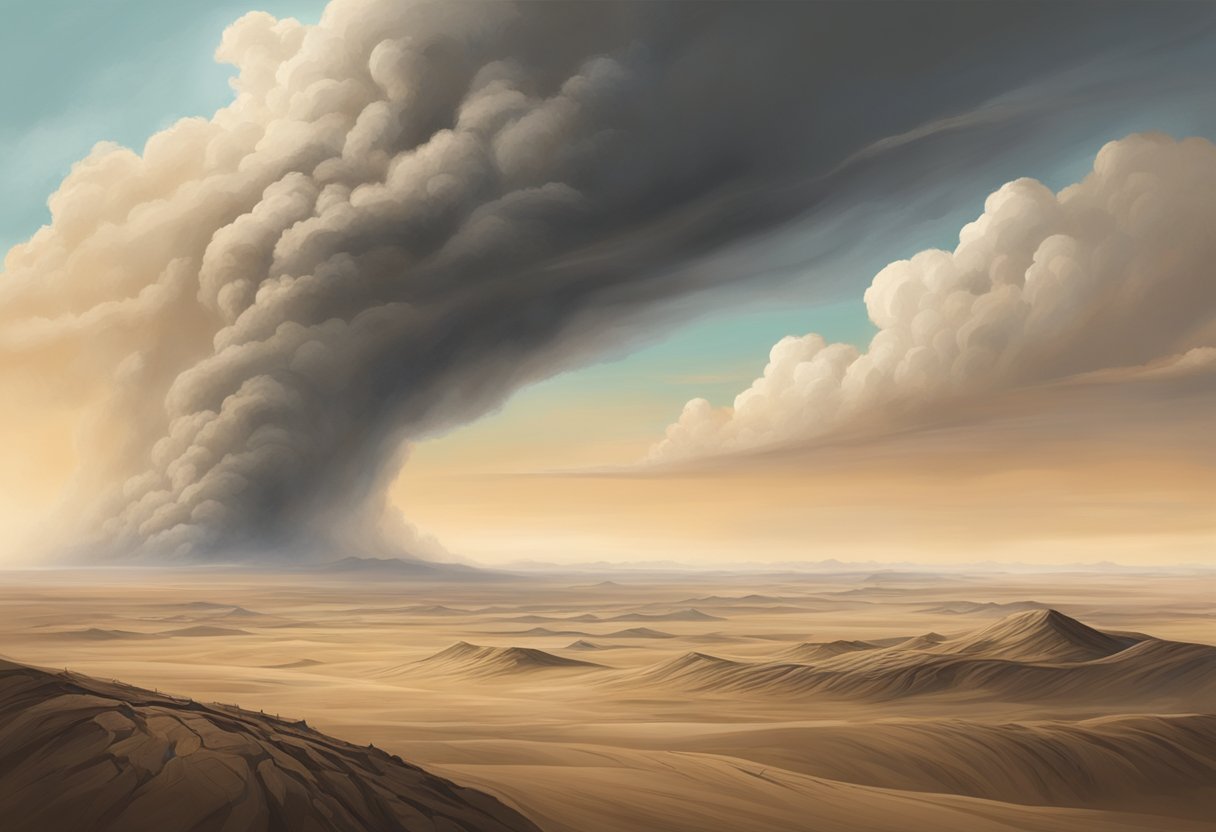
The Dust Bowl was a severe environmental crisis during the 1930s, primarily affecting the American and Canadian prairies. It included massive dust storms that resulted from years of poor agricultural practices and severe drought.
Description of Dust Storms and Environmental Devastation
During the Dust Bowl, intense dust storms, often called "black blizzards," swept across the plains. These storms were caused by extreme wind erosion, which picked up loose topsoil from over-farmed and drought-stricken land. The storms could last for hours or even days, reducing visibility to almost zero and covering everything in a thick layer of dust.
The environmental impact was catastrophic. Soil erosion stripped away fertile land, rendering large areas barren. The lack of vegetation further exacerbated the problem, as there were no roots to hold the soil in place. Farmers lost their livelihoods, and many were forced to abandon their homes. The land degradation was so severe that it took years, and significant effort, to rehabilitate the affected areas.
Black Sunday: April 14, 1935
One of the most infamous days of the Dust Bowl was April 14, 1935, known as "Black Sunday." On this day, one of the worst dust storms hit the Great Plains. The storm was so massive and dark that it blotted out the sun, plunging entire regions into darkness for hours. Visibility dropped to near zero, creating dangerous conditions for anyone caught outside.
The storm's immediate impact was devastating. Thousands of tons of topsoil were blown away, further eroding the land. People and animals were caught in the storm, struggling to breathe through the choking dust. Homes, farms, and machinery were buried under layers of dirt. Black Sunday became a symbol of the Dust Bowl's destructive power and highlighted the urgent need for better land management practices.
Socio-Economic Impact
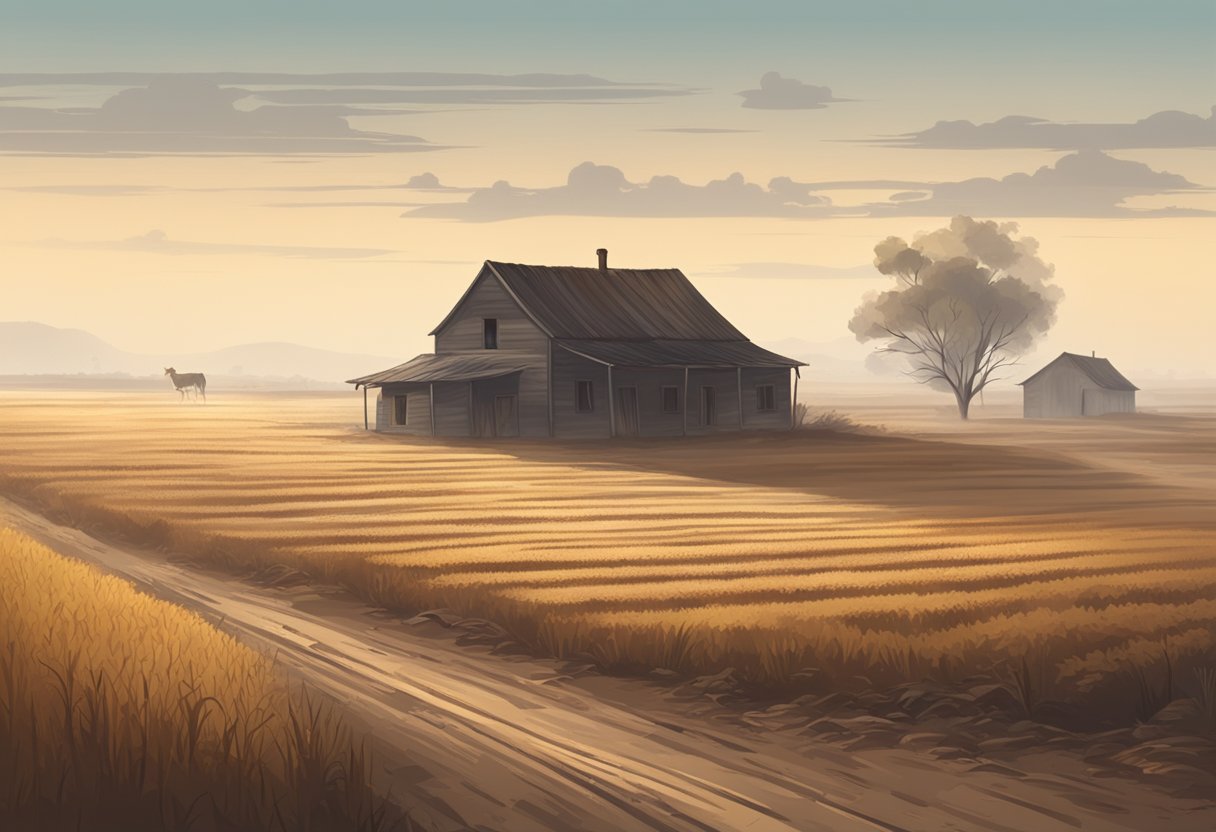
The Dust Bowl had severe effects on both the agricultural economy and the populations of the affected regions. Farmers faced massive financial losses, and many people were forced to migrate in search of better opportunities.
Implications for Farmers and Livestock
Farmers suffered greatly during the Dust Bowl. The dust storms devastated crops, making it nearly impossible to grow wheat and other staples. Agricultural land values plummeted, and farmers saw their revenue drop drastically, further deepening the economic depression.
Livestock also faced dire consequences. Without crops, there was little feed available for animals. Many livestock either died or had to be sold at extremely low prices. This further diminished the livelihood of the farmers and disrupted the local economy.
Population Declines and Migration
The Dust Bowl led to significant population declines in the affected areas. With no crops to cultivate and no revenue from livestock, many people couldn't sustain their families. This led to a mass migration, often referred to as the "Great Migration," where thousands moved westward, seeking work and more stable living conditions.
The migration significantly impacted the states they left behind, reducing the local workforce and further compounding the depressed economy. The influx of migrants to states like California created new economic pressures but also shifted demographic patterns in the United States.
The Role of the Great Depression
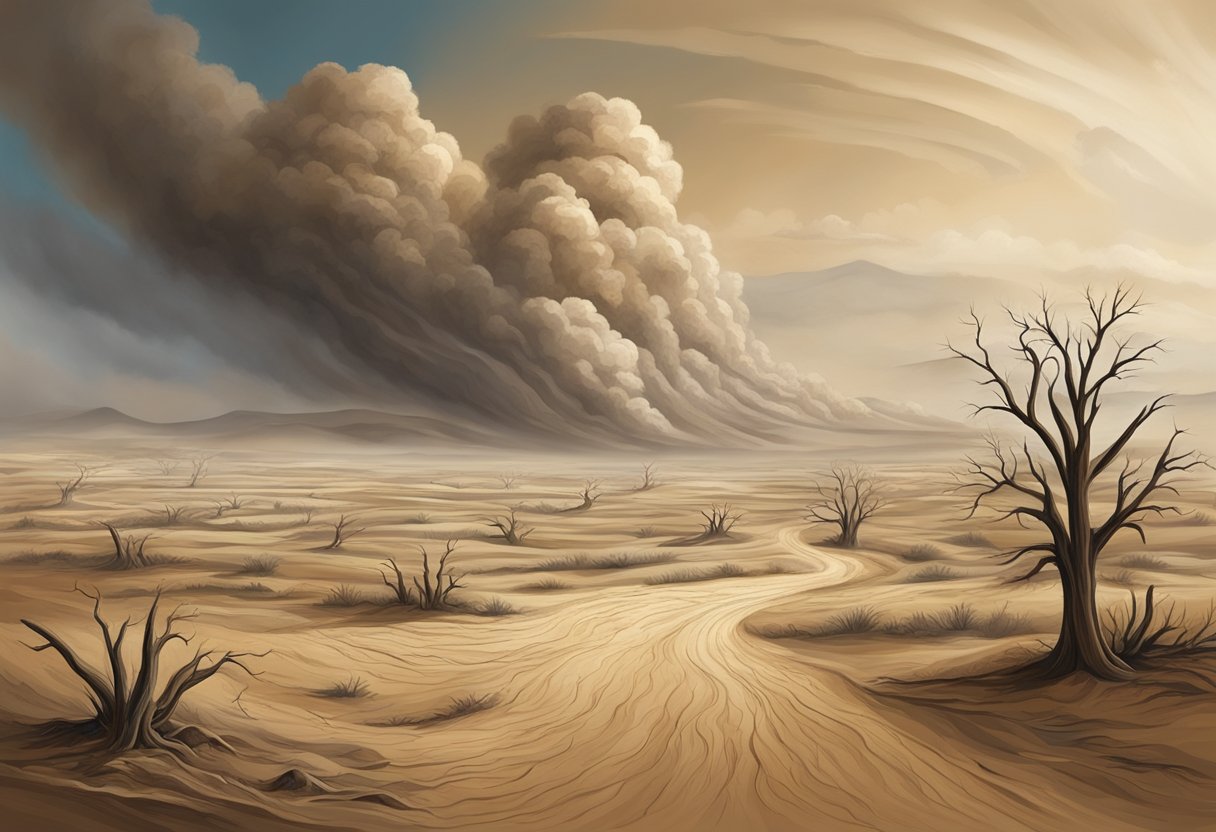
The Great Depression exacerbated the environmental disaster of the Dust Bowl, severely affecting farms and the broader economy of the United States.
Economic Strains and Agriculture
The Great Depression led to drastic economic strains on American farmers. Banks collapsed, resulting in lost savings and reduced credit availability. Farms couldn’t afford new equipment or improvements, and many struggled to stay afloat.
Crop prices plummeted, making it hard for farmers to sell their produce. With the Dust Bowl already damaging the soil, the reduced prices further worsened the situation. Low income from crops meant farmers couldn't invest in soil conservation or other methods to mitigate dust storms.
Rural America and Collapse of Market Prices
Rural America was hit hard by the Great Depression. Farmers faced a significant drop in market prices for their goods. Wheat and grain prices dropped to historic lows, bringing financial ruin to many farming families.
As market prices collapsed, the livelihood of rural communities deteriorated. Without stable income, rural residents couldn't maintain their properties, leading to abandoned farms and increased migration to cities. This economic instability deeply affected the agricultural backbone of the United States.
Government Response and Policies
The Dust Bowl led to severe environmental and economic consequences. In response, the United States government introduced several policies to provide relief and promote soil conservation.
New Deal Programs and Relief Efforts
Franklin D. Roosevelt’s New Deal introduced various programs to address the Dust Bowl disaster. They aimed to provide immediate aid to affected farmers and improve agricultural practices. The Works Progress Administration (WPA) and the Civilian Conservation Corps (CCC) were two standout initiatives.
The WPA created jobs for thousands of displaced workers, building infrastructure and public projects. The CCC focused on environmental projects, such as planting trees and building windbreaks, which helped reduce soil erosion.
The Resettlement Administration helped some families move to more fertile areas. Additionally, the government provided direct financial aid and loans to struggling farmers. These efforts were crucial for immediate relief and long-term agricultural sustainability.
Establishment of Soil Conservation Measures
The establishment of soil conservation measures was vital in combating the environmental impact of the Dust Bowl. The government set up the Soil Conservation Service (SCS) in 1935 to lead these efforts. The SCS worked directly with farmers to implement better land management practices.
The government promoted techniques such as crop rotation, contour plowing, and the use of cover crops to maintain soil health. These methods were essential in reducing soil erosion and maintaining fertility.
Programs encouraging the planting of shelterbelts—rows of trees to break the wind—also played an important role. These efforts demonstrated a significant shift away from the harmful “rain follows the plow” belief and towards sustainable farming practices. The emphasis was on preventing future dust storms and ensuring long-term soil health and stability.
These policies and programs helped mitigate the immediate crisis and laid the groundwork for sustainable agricultural practices in the future.
Cultural Representation and Legacy
The Dust Bowl has left a lasting mark on American culture, shaping literature, music, and visual arts. It also continues to be examined through modern perspectives, revealing its enduring significance in history.
Literature and Art Influenced by the Dust Bowl
John Steinbeck's The Grapes of Wrath remains one of the most famous literary works depicting the Dust Bowl. This novel highlights the struggles of a family forced to migrate due to the environmental and economic hardships. Woody Guthrie's folk songs, like "Dust Bowl Refugee," also narrate the trials faced by those affected.
Dorothea Lange provided powerful visual documentation of the era. Her photographs, especially "Migrant Mother," captured the dire conditions and human suffering, becoming iconic images of the Dust Bowl. These works have all contributed to a rich cultural legacy that portrays the hardship and resilience of this period in American history.
Modern Perspectives on The Dust Bowl
Documentaries and educational programs continue to shed light on the Dust Bowl, such as those produced by PBS. These modern takeaways delve into both historical and environmental aspects. Recent studies emphasize the importance of soil conservation and sustainable agriculture, lessons learned from past mistakes.
Scholars and artists still explore the effects of the Dust Bowl. New research and creative endeavors reflect on its impact, from migration patterns to economic policies. This ongoing interest ensures that the Dust Bowl remains a relevant topic in discussions about environmental disaster and human response.
Recovery and Regrowth
After the devastation of the Dust Bowl, efforts were made to restore the farmlands and ecosystems. These actions led to significant long-term changes in agriculture and the environment.
Re-establishment of Farmlands and Prairie Ecosystems
The recovery process began with re-establishing farmlands and prairie ecosystems. The Natural Resources Conservation Service played a key role in this effort. They promoted techniques like contour plowing and crop rotation to reduce soil erosion.
Programs such as the Prairie States Forestry Project were introduced to plant trees. These trees served as windbreaks to protect the soil. The replanting of prairie grass helped restore the natural ecosystem. Farmers learned new methods that were more sustainable.
Many farms in Nebraska and other affected areas saw gradual improvement. Government assistance and education were crucial. Farmers were taught to rebuild their soil's health using organic materials and cover crops.
Long-Term Environmental and Agricultural Changes
The Dust Bowl led to lasting changes in both environmental and agricultural practices. Improved techniques reduced the risk of future soil erosion. Soil conservation became a priority. Prairie grass and other native plants were promoted to keep the land healthy.
Farmers adopted crop rotation and reduced tilling to maintain soil quality. The emphasis on resilience transformed farming practices. The Great Plains saw more robust ecosystems. Laws and policies reinforced these sustainable practices.
Educational programs helped farmers continually adapt and improve. Over time, the region developed better strategies for dealing with droughts. Advances in science and technology supported these efforts. The legacy of these changes remains important today.




